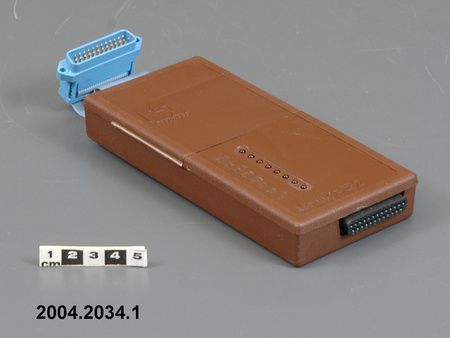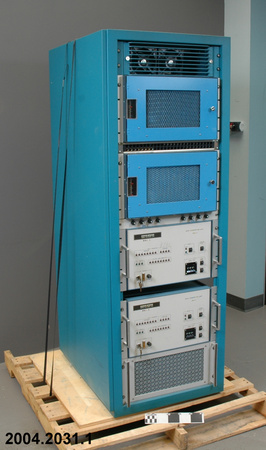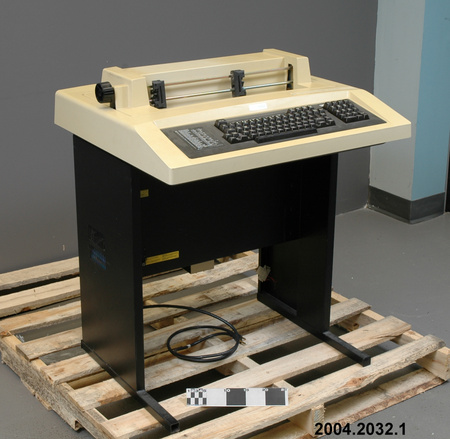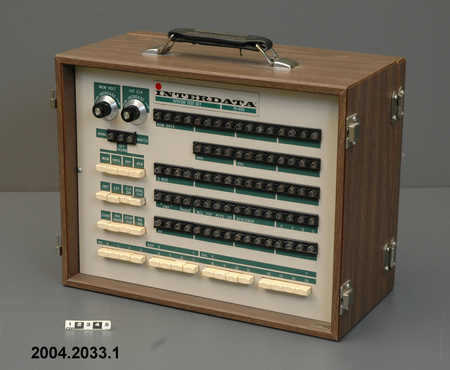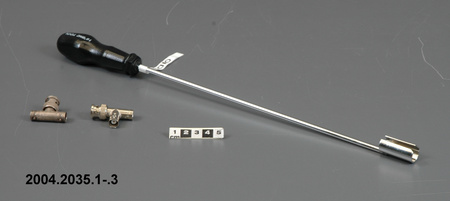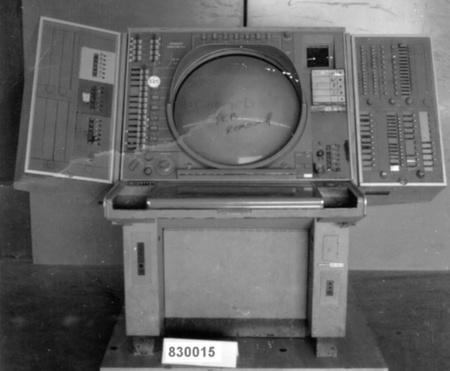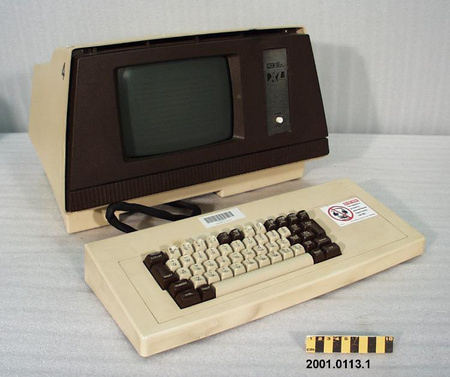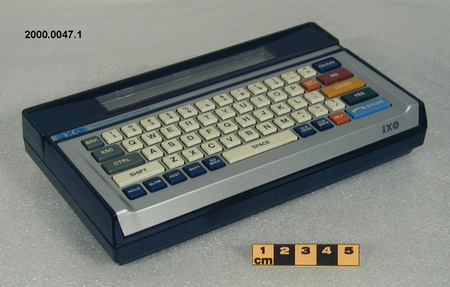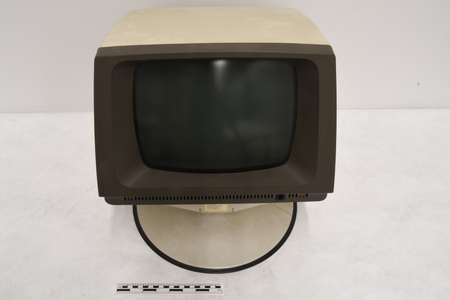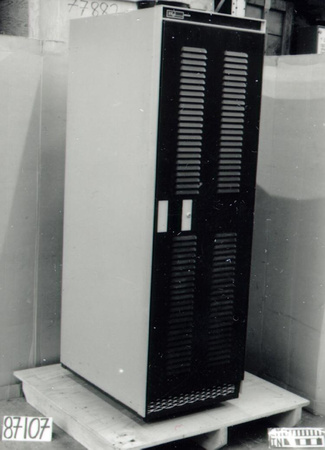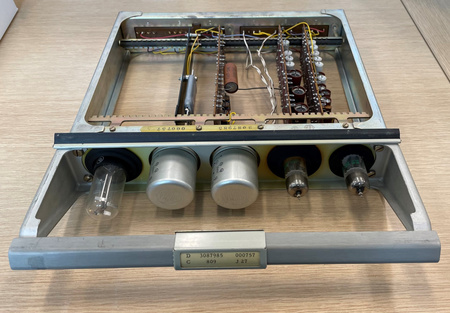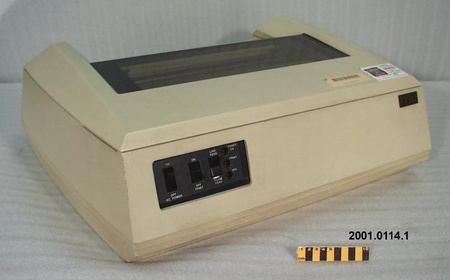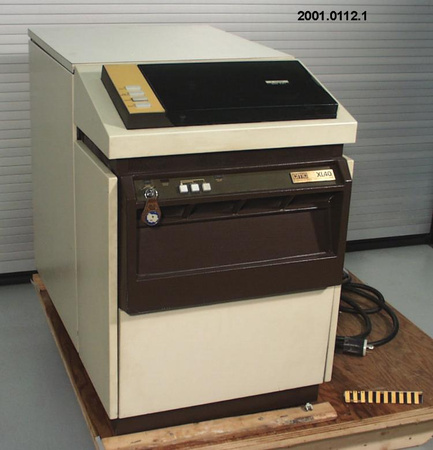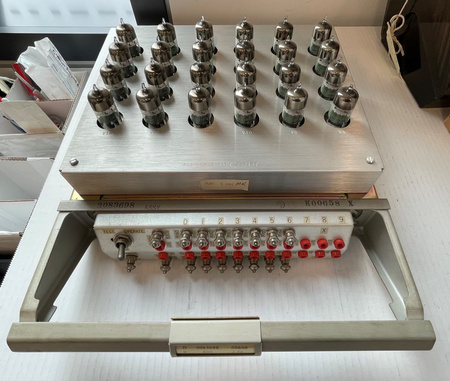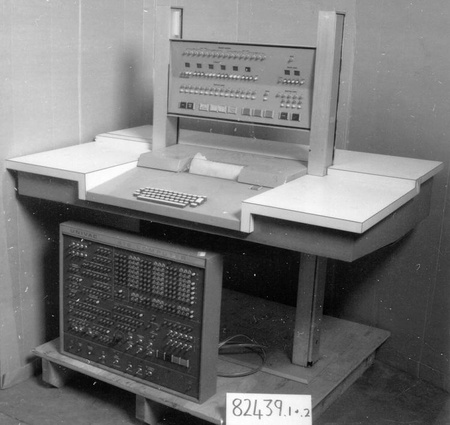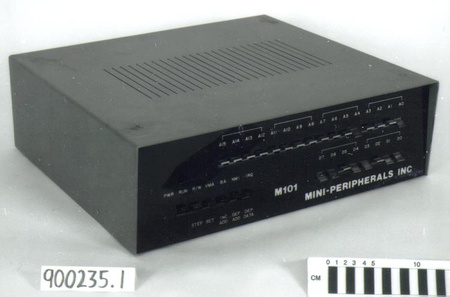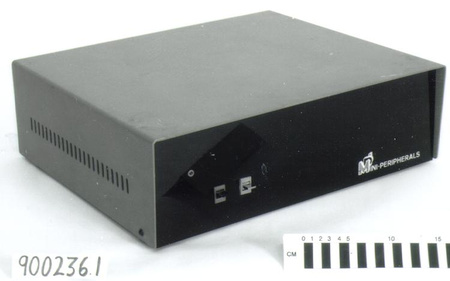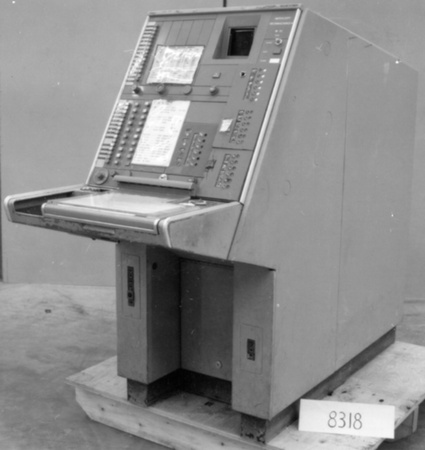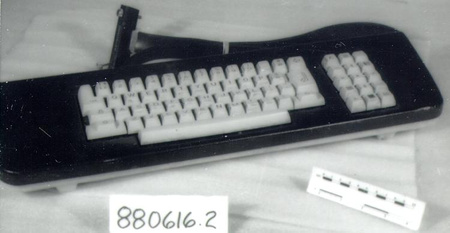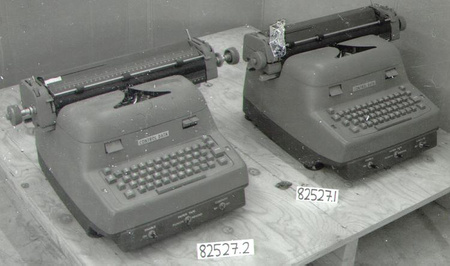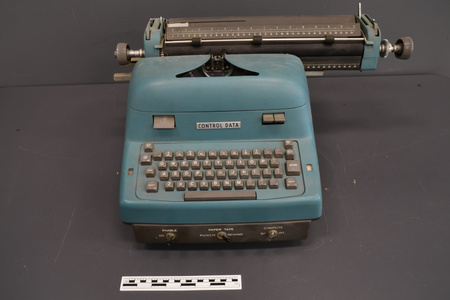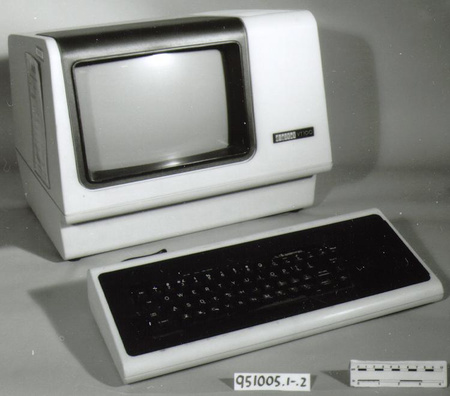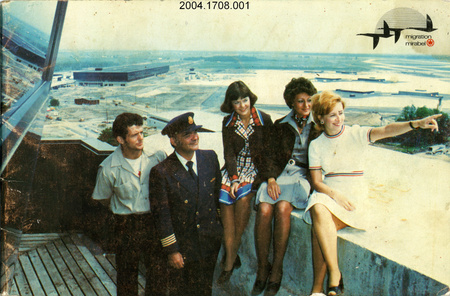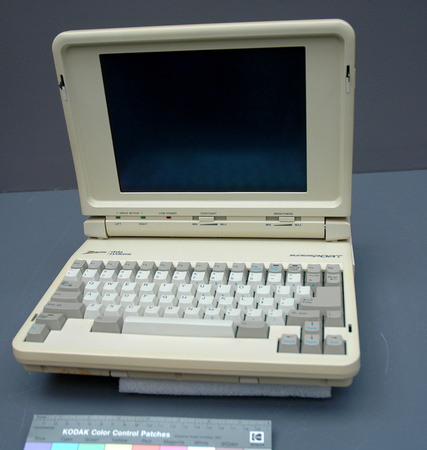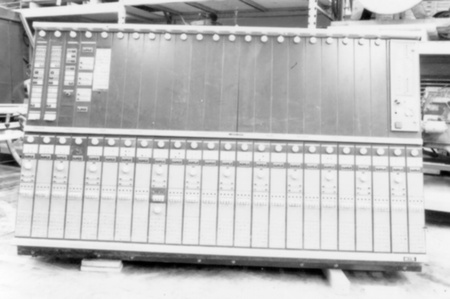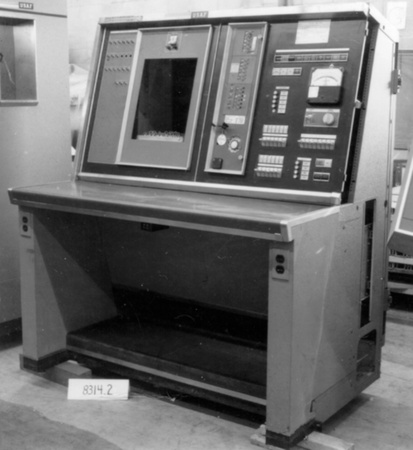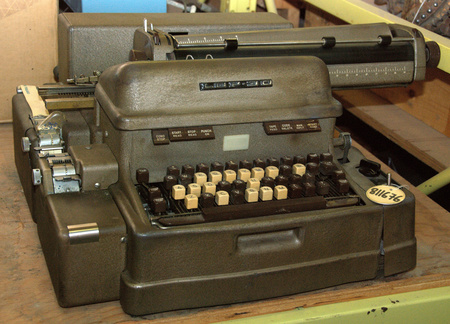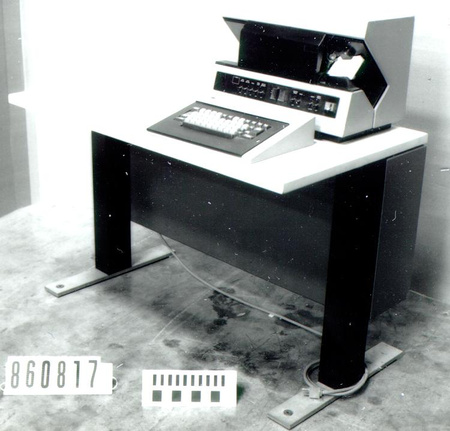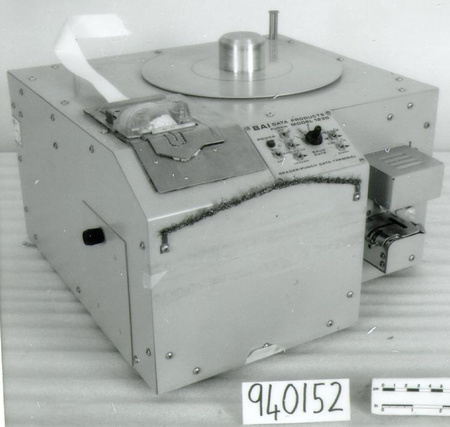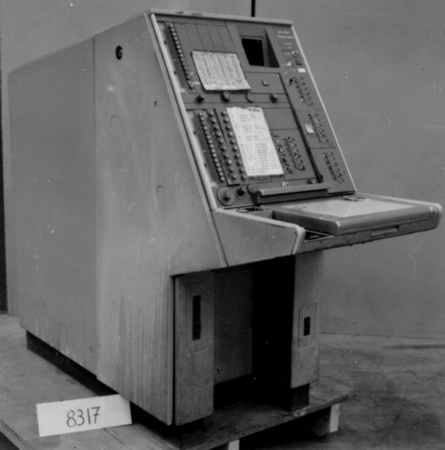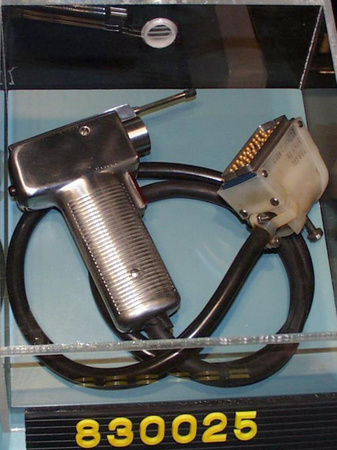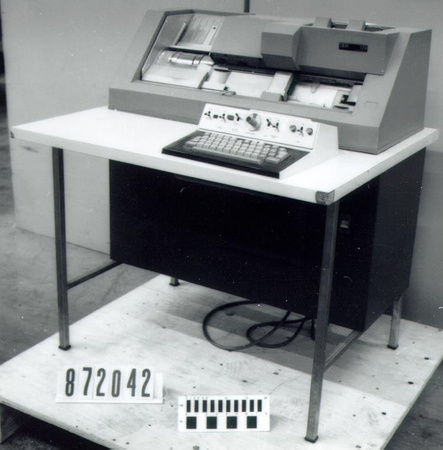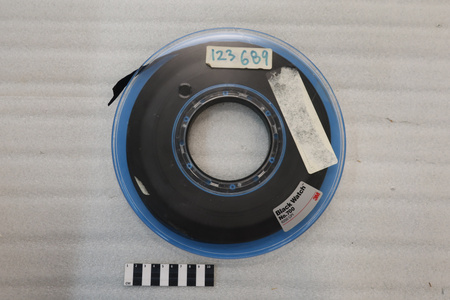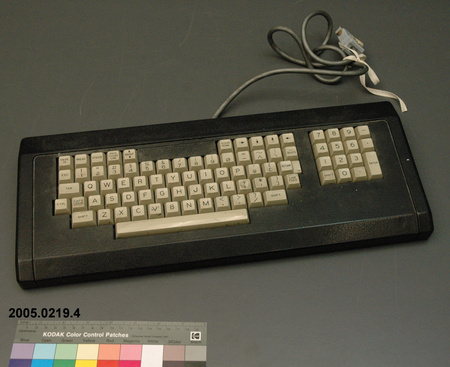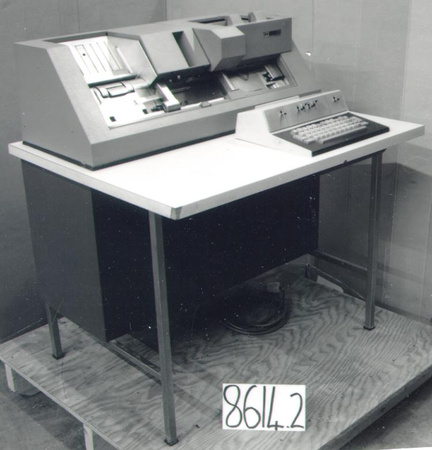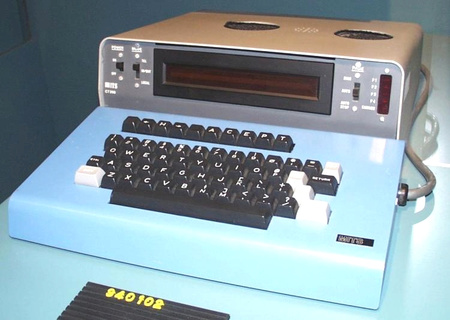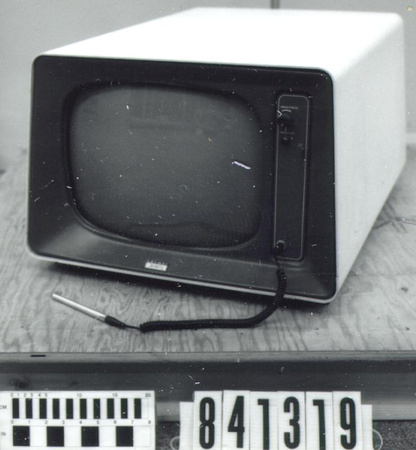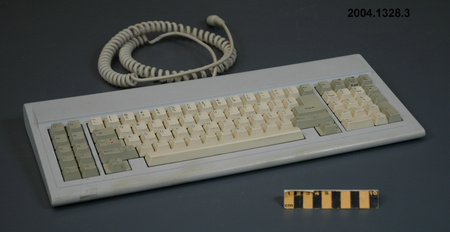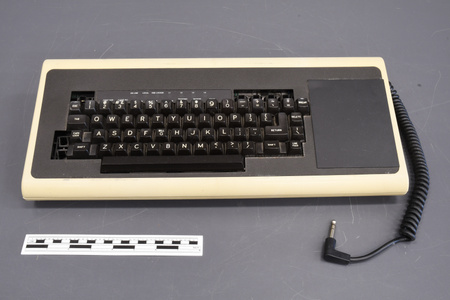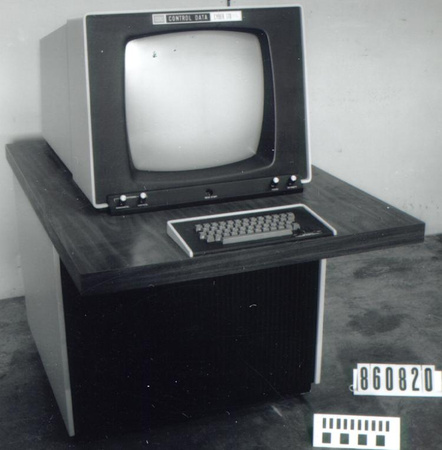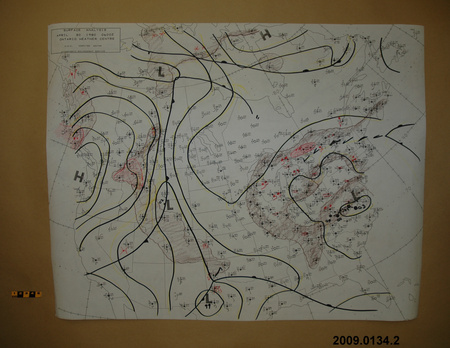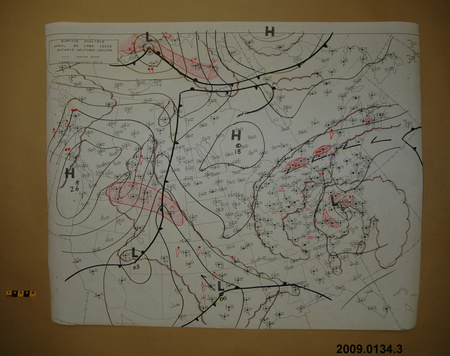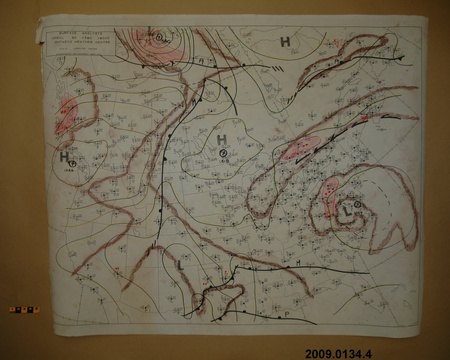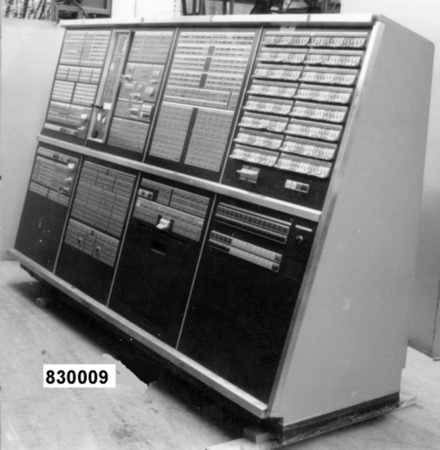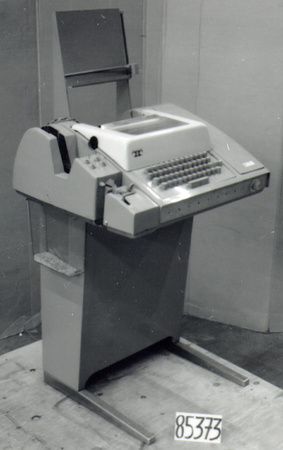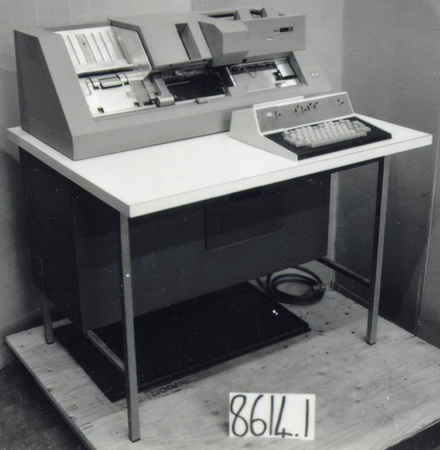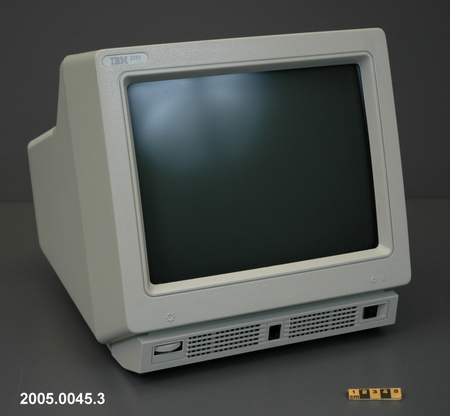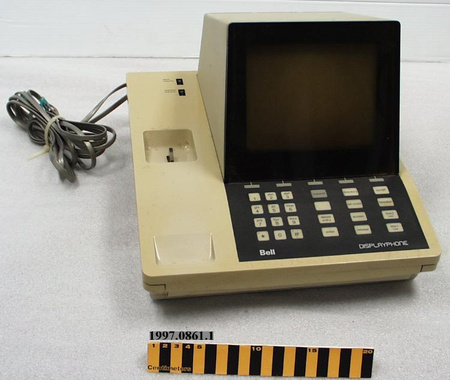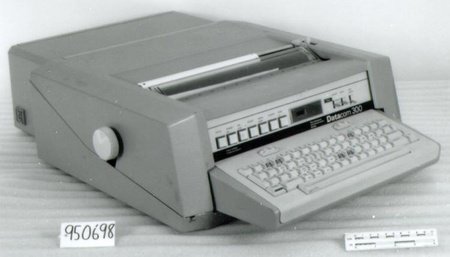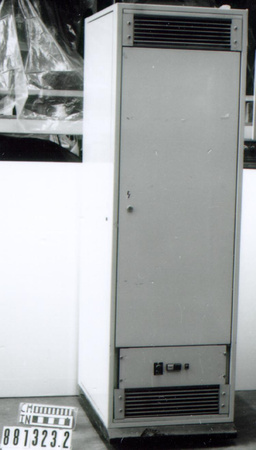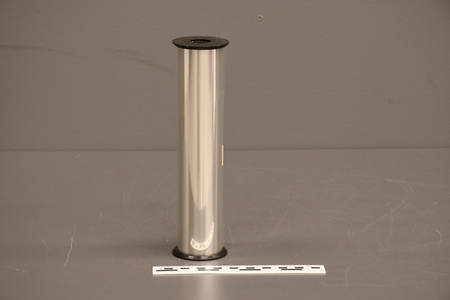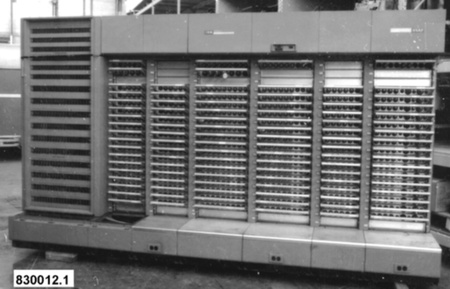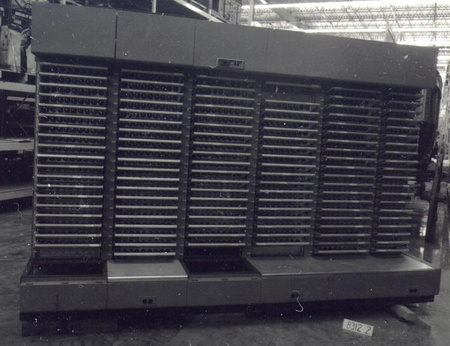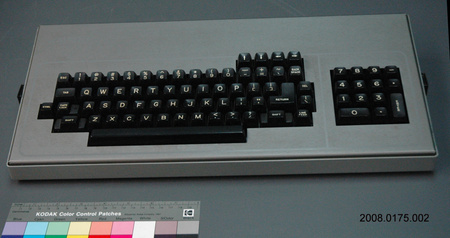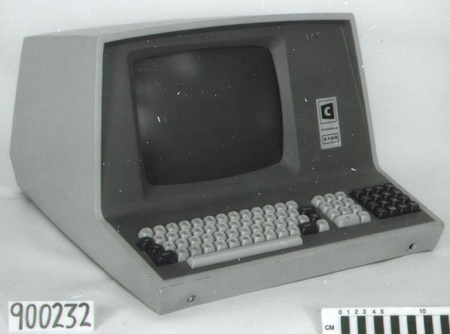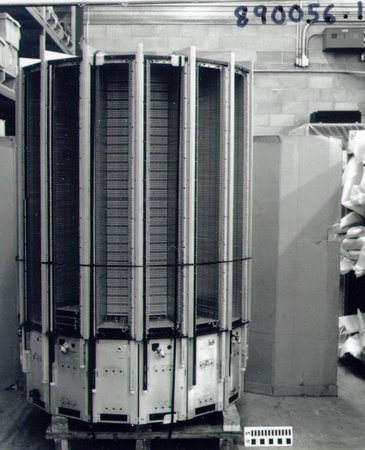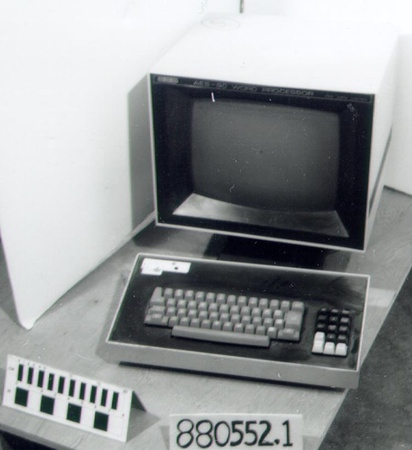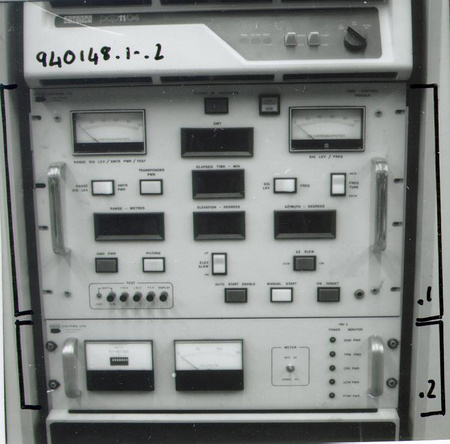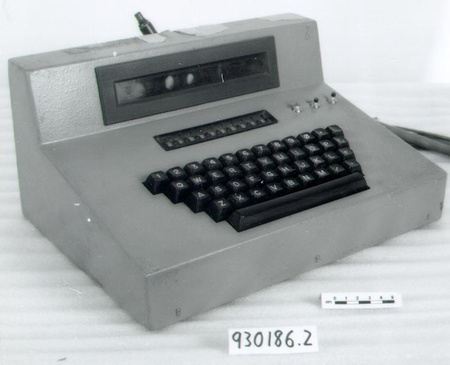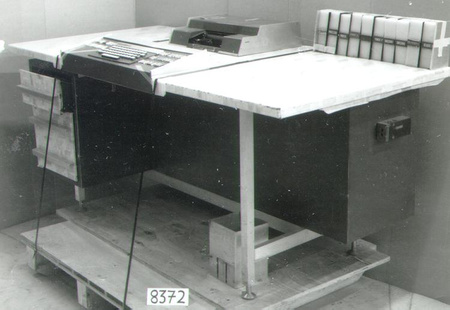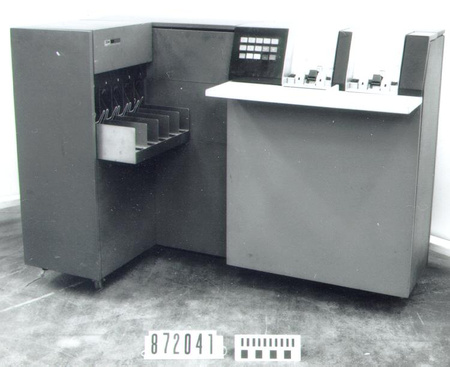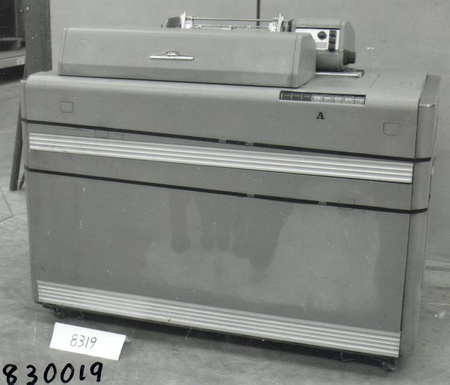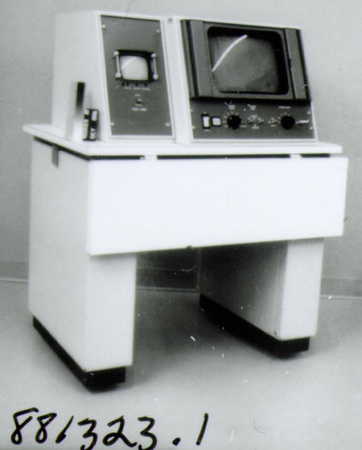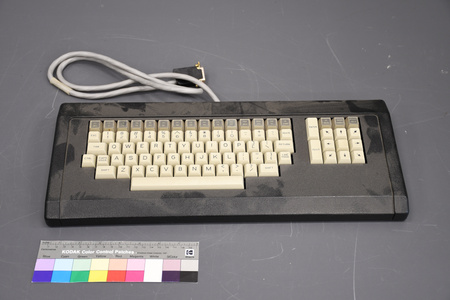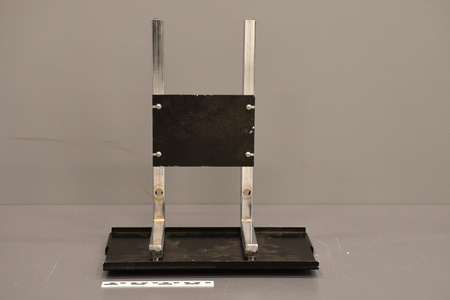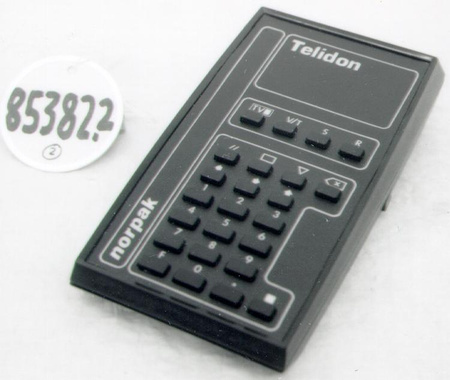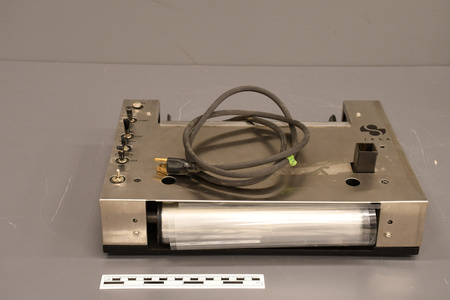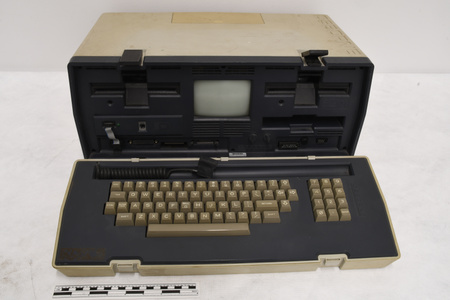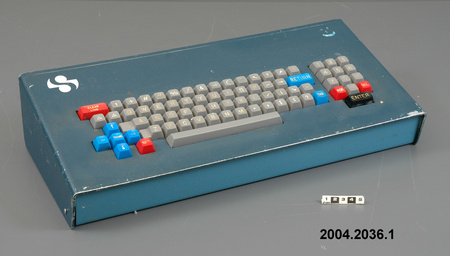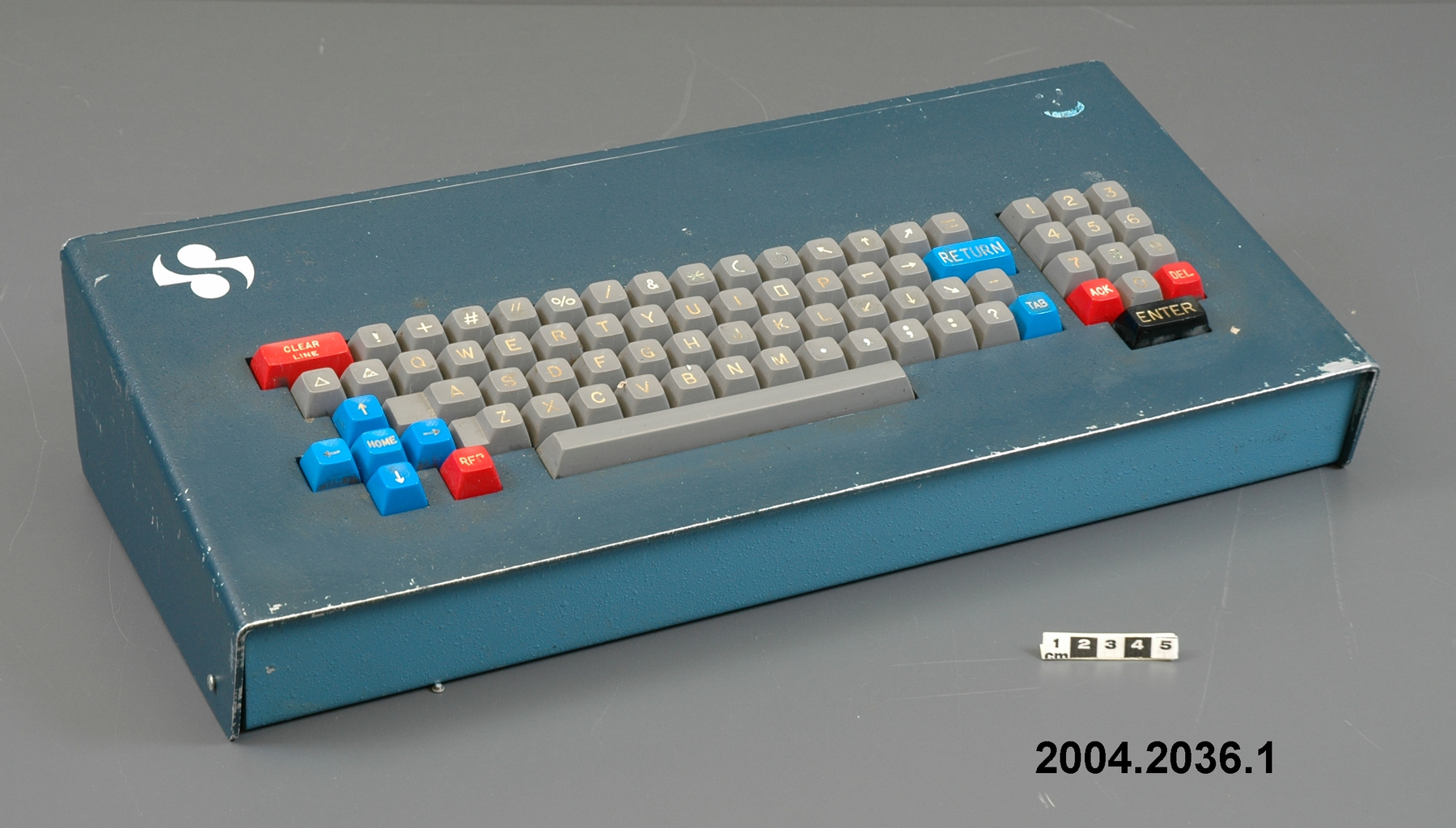Clavier d'ordinateur
Utiliser cette image
Puis-je réutiliser cette image sans autorisation? Oui
Les images sur le portail de la collection d’Ingenium ont la licence Creative Commons suivante :
Copyright Ingenium / CC BY-NC-ND (Attribution-NonCommercial 4.0 International (CC BY-NC 4.0)
ATTRIBUER CETTE IMAGE
Ingenium,
2004.2036.001
Permalien:
Ingenium diffuse cette image sous le cadre de licence Creative Commons et encourage son téléchargement et sa réutilisation à des fins non commerciales. Veuillez mentionner Ingenium et citer le numéro de l’artefact.
TÉLÉCHARGER L’IMAGEACHETER CETTE IMAGE
Cette image peut être utilisée gratuitement pour des fins non commerciales.
Pour un usage commercial, veuillez consulter nos frais de reproduction et communiquer avec nous pour acheter l’image.
- TYPE D’OBJET
- standard QWERTY/numeric pad
- DATE
- 1982
- NUMÉRO DE L’ARTEFACT
- 2004.2036.001
- FABRICANT
- Sharp, I.P. Associates Ltd.
- MODÈLE
- OIDS/ KB-1
- EMPLACEMENT
- Carleton Place, Ontario, Canada
Plus d’information
Renseignements généraux
- Nº de série
- 4
- Nº de partie
- 1
- Nombre total de parties
- 1
- Ou
- S/O
- Brevets
- S/O
- Description générale
- Metal casing and parts/ Synthetic keys and parts
Dimensions
Remarque : Cette information reflète la taille générale pour l’entreposage et ne représente pas nécessairement les véritables dimensions de l’objet.
- Longueur
- 47,5 cm
- Largeur
- 22,5 cm
- Hauteur
- 10,5 cm
- Épaisseur
- S/O
- Poids
- S/O
- Diamètre
- S/O
- Volume
- S/O
Lexique
- Groupe
- Aviation
- Catégorie
- Opérations aéroportuaires
- Sous-catégorie
- S/O
Fabricant
- Ou
- Sharp
- Pays
- Canada
- État/province
- Ontario
- Ville
- Carleton Place
Contexte
- Pays
- Canada
- État/province
- Terre-Neuve-et-Labrador
- Période
- circa 1982-2003
- Canada
-
A component of a Canadian designed and at least partly Canadian manufactured computerized data acquisition and display unit for air traffic control. The Electronic System Master Plan for Mirabel Airport identified a need to consolidate the display of information required by air traffic controllers. A system was needed that could collect this information and present it on a television type display. The prototype and software (16-bit) was developed in house at NAVCAN in 1972. An engineering model was developed by the Computer Systems Group, Telecommunications and Electronics Branch of Transport Canada. This model system was built around a mini-computer and incorporated only two display channels. The major concern at the time was the quality of the display, as it had to serve both low and high ambient light conditions. The initial phase of the program had been so successful that the decision was taken to expand the procurement to supply each of the Area Control Centres in Canada, as well as Mirabel, with a system. A contract was written with I.P. Sharpe Associates of Toronto & Ottawa (and Carleton Place) being the successful bidder. Halfway through the contract the project was spun off to a new company, Goodwood Data Systems (basically the Carleton Place facility). The systems were delivered in 1975-1978 (to 7 control centres and 2 systems for the Technical Systems Centre (TSC) in Ottawa and one for the training centre in Cornwall). The contract was for apx. $1 million. The system was based on 7400 type discrete integrated circuits. The Display Site Equipment contract went to Raytheon and Raytheon Canada in Waterloo while the computers were made by DY-4 here in Ottawa. OIDS was subsequently installed at all major Canadian airports with troubleshooting and technical support backup provided by 2 systems in NAVCANs Ottawa Technical Systems Centre near the airport. Training was done in Cornwall both for techs and air traffic controllers on the third backup system (Continued in Notes). - Fonction
-
A data input component of a computer, used to enter alphanumeric data and commands, this one control unit and input-output unit of an electronic data acquisition and display system designed specifically for use in an airport for air traffic control. - Technique
-
An example of an earlier version of the keyboard used with the OIDS computerized air traffic control, manufactured by I.P. Sharp. The OIDS replaced analogue and hand input data used by air traffic controllers. OIDS brought together information from different sources in a convenient and constantly and automated updated fashion. It made air travel safer and more efficient because the delays caused by weather in particular were minimized. Weather data handling was improved to the point where updating a weather report was at least 4 times faster than previously. - Notes sur la région
-
Inconnu
Détails
- Marques
- Partially illegible label on underside reads 'I.P. SHARP ASSOCIATES LIMITED/ COMPUTER PRODUCTS DIV./ CARLETON PLACE ONT. CANADA/ KEYBOARD/ MODEL KB-1 PART NO 10819 SERIAL 0004/ VOLTS 12.6 AMPS .3 CYCLES 60'
- Manque
- Appears complete. Some detached keys were replaced and may have come from another keyboard.
- Fini
- Stippled blue painted casing/ Grey, red, blue and black keys/ Gold painted metal part
- Décoration
- White Goodwood logo on front
FAIRE RÉFÉRENCE À CET OBJET
Si vous souhaitez publier de l’information sur cet objet de collection, veuillez indiquer ce qui suit :
Sharp, I.P. Associates Ltd., Clavier d'ordinateur, vers 1982, Numéro de l'artefact 2004.2036, Ingenium - Musées des sciences et de l'innovation du Canada, http://collection.ingenium.ca/fr/id/2004.2036.001/
RÉTROACTION
Envoyer une question ou un commentaire sur cet artefact.
Plus comme ceci
